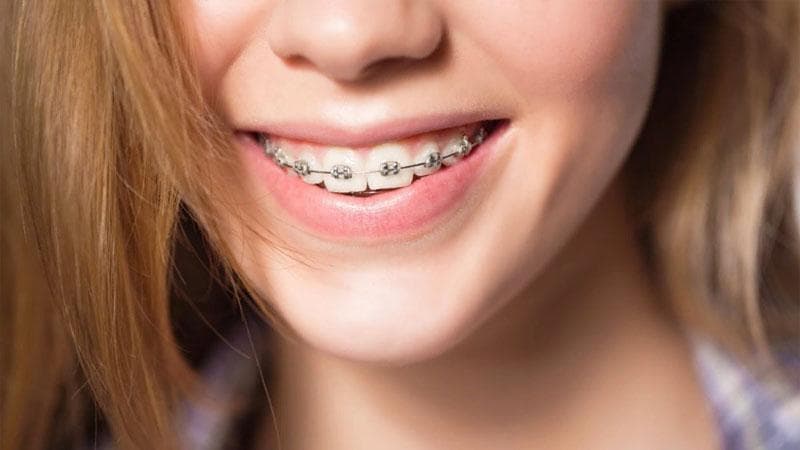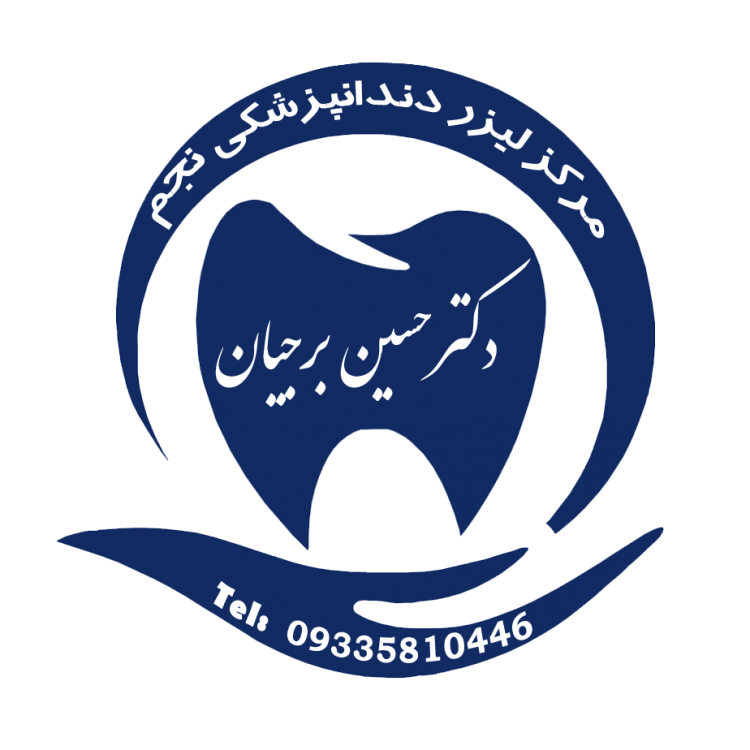Getting to know the types of orthodontic bonding
Currently, there are two different methods for placing brackets on the teeth. In this article from Dr. Hossein Borjian's website The best gum surgeon in Isfahan We will examine the types of orthodontic bonding.
Indirect bonding is the method of placing a bracket to connect the brace to the tooth in such a way that a complete set of braces can be placed on the tooth..
Direct bonding is a method in which braces are placed on each tooth one by one.
Most orthodontists avoid bonding the upper and lower teeth in one session to gradually connect the braces on the patient's teeth.. The entire process of bonding brackets and placing archwires can be from 15 until the 30 It takes minutes. Both methods have their advantages and disadvantages.
Indirect bonding method
In an effort to make patients happy and make the process of bonding braces smooth and painless, we have introduced the indirect bonding technique.. Indirect bonding allows for faster installation and ensures proper placement of the bracket on each individual tooth.. This means that you spend less time in the chair during the bonding process of the brackets, and the mouth retainers hold your mouth open for less time..
In the indirect bonding method, instead of attaching the brackets directly to the teeth, they are first placed on a dental plaster model and then transferred to the patient's teeth.. It is true that this method typically shortens the duration of the patient's initial bonding, but consecutive appointments and even the duration of treatment may be increased due to the increased possibility of bracket displacement, as the brackets may shift slightly during the transfer process.. Some dentists believe that the most predictable and accurate bracket bonding method is the direct bonding method..
Indirect bonding treatment process
Indirect bonding trays are placed on the teeth, and all the brackets are attached together..
Indirect bonding starts with taking a mold of your teeth. It only takes a few minutes and gives dentists an exact replica of your mouth. After that, the mold goes to the laboratory and a pattern 1: 1 It is made from your teeth. Then the mold is placed inside the mouth and each bracket is placed exactly where it should be. For the final step, the dentist creates a special tray for the patient that allows him to transfer the brackets from the lab-made model to the patient's teeth..
The time spent to place the brackets in the correct position on the laboratory model, the difficult process of directly attaching the brackets Orthodontic Removes stains on the teeth. It also takes much less time, is more comfortable, and results in less loose brackets..
After the special tray is prepared, your brace is ready to be installed. You will need to return to your dentist's office to adjust the tray and the braces attached to it. Indirect connection allows all of your brackets to be placed on your teeth at the same time, reducing the time it takes to install traditional braces from approx. 40-60 Minutes to only 15-25 reduce minutes!
Direct bonding method
When the direct bonding method is used, the brackets are placed directly on the teeth.. This is done on each tooth one by one, not on a plaster model. This method takes more time than the indirect bonding method because each bracket is placed correctly on the tooth from the beginning, according to the position of the crown and the root of the tooth.. Dentists spend more time performing direct bonding because it requires more precision and attention to detail..
How to place the bracket and pipe
Placing brackets and pipes step by step:
- The teeth are polished with a tasteless paste (This work is similar to polishing teeth after scaling) to ensure that the brackets are properly attached and then air-dried.
- A cheek retractor is used to keep the teeth visible and dry during the procedure.
- The teeth are easily dried by air and conditioner (Blue gel) About 30 The second is placed on the front surface of the teeth. The taste of this gel can be slightly sour and bitter.
- The conditioner is washed off and the teeth are dried again using suction and air.
- To improve the bonding process, an adhesive primer is applied to the teeth and dried with a blue LED light..
- Finally, bonding cement is placed on the back of the braces and then attached to the teeth.. Brackets are placed very precisely on the teeth and excess bonding cement is removed. If the cement is sensitive to light, use a blue LED light to dry (hard) It is used as an adhesive. Some binders do not require light because they dry chemically.
- The cheek retractor is removed and the wires are connected.

How to put a band or ring
Many orthodontists use strips (rings) are placed on the posterior molars. The advantage of using molar bands includes increasing the stability of the attachment to the big tooth in the very active part of the mouth. Also, these bands offer additional connections in the tongue area of the band as well as connecting tubes to headbands and other accessories..
The process of placing the band on the molars includes the following:
- The spacers are placed one week before the bonding session.
- The spacers are removed and the space between the posterior molars is exposed.
- The bands, which exist in different sizes, are selected individually for each tooth.
- Bite sticks are used to help place and place the proper band on the tooth. By placing the bite stick between the teeth, there is less pressure on the jaw when the band is placed. The orthodontist first places the bite stick and then tells the patient when and how much to bite the stick..
- After the bands are selected and placed on the molars, they are removed and dried.
- The inner part of the band is filled with band cement and then placed on the tooth. If the cement is sensitive to light, light is used to dry it.
Adjust your braces
When the braces are first placed on your teeth and then adjusted, you can expect to feel some stiffness for approximately four to six hours after your treatment session, which will typically become more painful over time.. This pain is a direct result of the archwires pulling the teeth into place. To relieve this pain, over-the-counter pain relievers are recommended to patients. You can expect the pain to subside after about three to five days.
After braces are attached, you should see your doctor approximately every six to eight weeks. If necessary, the wires passing through the braces are adjusted. In this way, bands that are indirectly attached to your teeth are very similar to traditional braces..
Re-bonding for loose brackets
A random displacement of one Orthodontic bracket Caused by trauma or intentional removal of a bracket for repositioning is common in orthodontic practice. Before rebonding an orthodontic bracket, the orthodontist should consider refinishing the enamel surfaces, using new brackets, or the original bracket and rebonding..
The detached bracket should first be checked for deformation that may have occurred due to breakage. Brackets that appear to be deformed should be replaced with a new bracket. Before rebonding begins, any remaining composite on the tooth surface is removed with a boron tungsten carbide. The remaining adhesive on the loose bracket is also removed with boron, and sandblasting is used as a treatment option to remove all visible bonding material from the base.. Then to etch the tooth for a long time 30 Second, phosphoric acid gel is used. It can be done longer than this. Unlike primary bonding, the enamel surface may not appear uniform because some areas of the tooth may still have composite. After priming the tooth, the bracket is attached again.
The Instagram page of Dr. Hossein Borjian, the best gum surgeon in Isfahan
Removing braces
Unlike other restorative methods in dentistry, the adhesive system applied at the beginning of the orthodontic treatment is removed and the brackets are removed after the treatment is completed.. The brace removal stage is as important as the bonding stage and should not be underestimated. This may cause significant damage to the enamel surface and increase the chair time to restore the original shine to the tooth surface..
Brace removal sessions are best scheduled on a specific day of the week or month so that both the doctor and staff are well focused to provide the best patient care.. Brackets, either metal or ceramic, should be removed separately after the archwires are removed to prevent the transfer of pressure from tooth to tooth.. This can increase the risk of developing cracks in the tooth enamel.
The success or failure of bonding starts from the surface of the tooth. Proper conditioning of the tooth surface, whether it is enamel, composite, porcelain or metal, is a variable that must be controlled when connecting brackets with glue.. If the tooth surface is not properly adjusted or becomes contaminated, it cannot provide acceptable strength regardless of the type of adhesive.
Attention :
- The scientific accuracy of the above material should be confirmed by the patient's personal consultation with Dr. Borjian.
- This article was managed and published by the site admin.




ddk
Hello good time. شما باندینگ کامپوزیت انجام میدین طبق مقاله برای فاصله دندان جلو؟
Clinic 24
سلام و وقت بخیر
در گذشته درمانهای ترمیمی و بستن دیاستم انجام میدادیم
ولی دیگر درمانهایی مثل بستن دیاستم را انجام نمیدهیم